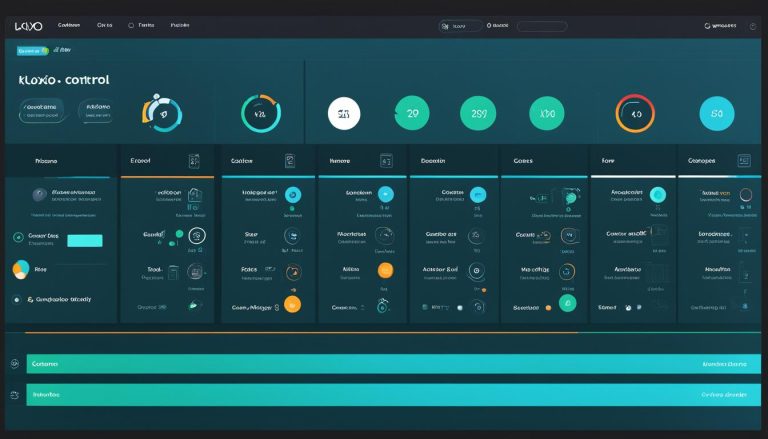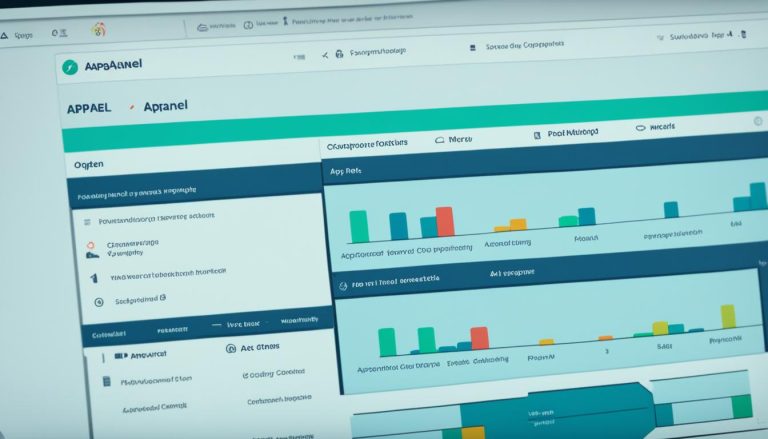Understanding What is Data Warehousing Explained
Hello, and welcome to this article where we will explore the concept of data warehousing. If you’ve ever wondered what data warehousing is and how it can benefit your organization, you’ve come to the right place. In this section, we will provide you with a comprehensive introduction to data warehousing and its fundamental principles.
A data warehouse is a specialized data management system that enables and supports business intelligence activities, particularly analytics. It serves as a centralized repository for large volumes of data from various sources. Data warehouses are characterized by being subject-oriented, integrated, nonvolatile, and time-variant. These features ensure that organizations have a reliable and efficient “single source of truth” for their data, enabling them to make informed business decisions.
Data warehouses offer several benefits to organizations. They provide the capability to analyze large volumes of data and extract meaningful insights. By maintaining a historical record of data, data warehouses enhance decision-making and enable data scientists and business analysts to derive valuable insights. Furthermore, the subject-oriented, integrated, nonvolatile, and time-variant characteristics of data warehousing facilitate fast queries, high data throughput, and flexibility for end users to analyze and present data.
In this article, we will also explore the architecture of data warehouses. We will discuss the various components involved, such as relational databases, ELT solutions, analytical tools, and data marts. Additionally, we will delve into the evolution of data warehousing and how it has progressed from supporting traditional business intelligence platforms to incorporating advanced technologies like AI and machine learning.
Key Takeaways:
- Data warehousing is a specialized data management system designed for business intelligence activities and analytics.
- Data warehouses serve as centralized repositories for large amounts of data, providing organizations with a “single source of truth.”
- Data warehouses offer benefits such as the ability to analyze large volumes of data, improve decision-making, and provide historical data for insights.
- Data warehouse architecture can vary depending on organizational needs, including components like relational databases, ELT solutions, and analytical tools.
- Data warehousing has evolved from supporting traditional BI platforms to incorporating advanced technologies like AI and machine learning.
Benefits of Data Warehousing
Data warehouses provide numerous advantages and are integral to organizations seeking to make data-driven decisions. Let’s explore the benefits of data warehousing:
1. Analysis of Large Volumes of Data
Data warehouses enable the analysis of vast amounts of data, allowing organizations to gain valuable insights. By consolidating data from various sources into a centralized repository, businesses can efficiently process and extract meaningful information.
2. Historical Record and Improved Decision-Making
Data warehousing provides a historical record of data, empowering data scientists and business analysts to uncover trends, patterns, and correlations. This historical perspective enhances decision-making processes by enabling informed, data-driven strategies.
3. Subject-Oriented, Integrated, Nonvolatile, and Time-Variant Data
Data warehousing possesses unique characteristics that optimize data analysis:
- Subject-oriented: Data warehouses allow organizations to analyze data related to specific subjects, such as sales, marketing, or customer behavior.
- Integrated: Data integration within a warehouse ensures consistency and coherence, enabling businesses to establish relationships between disparate data types.
- Nonvolatile: Data stored in a data warehouse remains stable and unaffected by daily operational transactions.
- Time-variant: Data warehouses capture and retain historical data, enabling analysis of how information changes over time.
4. Fast Queries, High Data Throughput, and User Flexibility
A well-designed data warehouse facilitates fast queries, ensuring prompt access to critical information. High data throughput allows for efficient processing and retrieval of data, promoting agile decision-making. Additionally, data warehouses provide end users with flexibility to analyze and present data according to their specific requirements.
| Benefits of Data Warehousing |
|---|
| 1. Analysis of large volumes of data |
| 2. Historical record and improved decision-making |
| 3. Subject-oriented, integrated, nonvolatile, and time-variant data |
| 4. Fast queries, high data throughput, and user flexibility |
By leveraging the benefits of data warehousing, organizations gain a competitive edge in today’s data-centric landscape. The ability to analyze large datasets, derive insights from historical records, and work with subject-oriented and integrated data provides a solid foundation for data-driven decision-making.
Next, let’s delve into the architecture of data warehouses and examine the components that make up these powerful data management systems.
Data Warehouse Architecture
When it comes to data warehousing, the architecture of a data warehouse plays a crucial role in enabling organizations to effectively manage and analyze large amounts of data. The specific architecture can vary depending on the needs and requirements of the organization.
Some common data warehouse architectures include:
- Simple Design with Relational Database: This architecture involves using a relational database as the central repository, with various components for data preparation, statistical analysis, reporting capabilities, and client analysis tools for data visualization.
- ELT Solution: In this architecture, the data preparation is done through an Extract, Load, and Transform (ELT) process. It involves loading large volumes of data into the warehouse first and then transforming it as needed for analysis.
- Hub and Spoke Architecture: This architecture includes a central data warehouse, with data marts serving as subsets of the warehouse for specific lines of business or departments. It allows for more focused and specialized analysis.
- Sandbox: Sandboxes are private areas within the data warehouse environment that are used for informal data exploration, experimentation, and testing.
The architecture of data warehouses has evolved over time, incorporating AI, machine learning, and autonomous features to enhance performance, reliability, and cost-effectiveness. These advancements have made it possible for organizations to leverage the power of data warehousing in a more efficient and effective manner.
To illustrate the components of a typical data warehouse architecture, here is a diagram:
As shown in the diagram, the components of a data warehouse architecture include:
- Data Sources: These are the various systems and applications that provide data to the data warehouse. They can include transactional databases, external data sources, file systems, and more.
- Data Integration: This component involves extracting data from the sources, transforming it as necessary, and loading it into the data warehouse. It includes processes such as data cleansing, data enrichment, and data consolidation.
- Data Storage: This is where the data is stored within the data warehouse. It can be organized using different data models, such as a star schema or a snowflake schema.
- Data Processing: This component involves performing various data processing tasks, such as aggregations, calculations, and data transformations, to prepare the data for analysis.
- Data Access: This component allows users to access and retrieve the data from the data warehouse. It can include various tools and interfaces, such as SQL-based query tools, reporting tools, and data visualization tools.
By understanding the architecture of a data warehouse and its components, organizations can design and implement a data warehouse solution that meets their specific needs and enables them to derive meaningful insights from their data.
The Evolution of Data Warehouses—From Data Analytics to AI and Machine Learning
Data warehouses have undergone significant evolution, transforming from supporting traditional Business Intelligence (BI) platforms to becoming comprehensive analytics infrastructures. This evolution has occurred through several iterations, each bringing new capabilities and functionalities to the data warehousing landscape.
Initially, data warehouses were primarily used for transactional reporting, providing organizations with a centralized repository to store and retrieve data for analysis. However, as the need for more advanced analytics capabilities arose, data warehouses underwent further iterations.
One significant development was the introduction of slice and dice capabilities, which allowed users to filter and manipulate data according to their specific needs. This enabled organizations to dive deeper into their data and extract more intricate insights.
Predictive analytics then emerged as a crucial feature of data warehouses, allowing businesses to forecast future trends and make informed decisions based on patterns and predictive models. This iteration facilitated proactive decision-making and proactive planning.
Subsequently, tactical analysis capabilities were incorporated into data warehouses, empowering organizations to analyze data in real-time and respond to immediate business demands. This enhanced agility and responsiveness, enabling companies to adapt quickly to changing market conditions.
As data volumes continued to grow, data warehouses also evolved to enable the storage of months or even years worth of data. This expanded historical data availability enabled comprehensive trend analysis and long-term planning.
To support these iterations, data warehouses had to incorporate a wider range of datasets from various sources, including structured, semi-structured, and unstructured data. This diverse data environment posed new challenges in data integration and management.
Moreover, the incorporation of Artificial Intelligence (AI) and Machine Learning (ML) has been a game-changer in the evolution of data warehouses. With AI and ML, data warehouses can automate data processing, improve data quality, and enable advanced analytics capabilities such as predictive modeling, anomaly detection, and natural language processing.
AI-powered data warehouses leverage algorithms and models to automate data preparation, enabling faster time-to-insight and reducing manual intervention. This accelerates data processing and analysis, allowing organizations to gain actionable insights more efficiently.
Furthermore, AI and ML algorithms applied within data warehouses can identify patterns and correlations in the data that might not be immediately apparent to human analysts. This augments human decision-making and enhances the accuracy and completeness of insights drawn from the data.
“The incorporation of AI and ML has revolutionized data warehousing, empowering organizations to unlock the full potential of their data and leverage advanced analytics capabilities for better decision-making.”
The latest advancement in the evolution of data warehouses is the emergence of autonomous data warehouses. These intelligent systems leverage AI and ML algorithms to automate and optimize various aspects of data warehousing, including data storage, data processing, performance tuning, and security.
The autonomous data warehouse eliminates the need for manual intervention in routine tasks, allowing data professionals to focus on higher-value activities such as data analysis, modeling, and strategy development.
Moreover, the autonomous data warehouse offers enhanced value extraction, lower total cost of ownership, improved reliability, and performance. It is designed to effortlessly handle the growing data volumes and complexity while ensuring maximum data availability and scalability.

| Data Warehouse Evolution Iteration | Description |
|---|---|
| Transactional Reporting | Initial iteration focused on providing a centralized repository for storing and retrieving data for analysis. |
| Slice and Dice | Enabled users to filter and manipulate data according to their specific needs, diving deeper into the data to extract insights. |
| Predictive Analytics | Introduced the ability to forecast future trends and make informed decisions based on patterns and predictive models. |
| Tactical Analysis | Facilitated real-time analysis and response to immediate business demands, enhancing agility and responsiveness. |
| Long-Term Data Storage | Evolution to store months or years worth of data, enabling comprehensive trend analysis and long-term planning. |
| Incorporation of AI and ML | Integration of AI and ML capabilities to automate data processing and enable advanced analytics. |
| Autonomous Data Warehouses | Latest iteration leveraging AI and ML to automate and optimize various aspects of data warehousing. |
Data Warehouses, Data Marts, and Operational Data Stores
While data warehouses, data marts, and operational data stores serve similar purposes, they have distinct characteristics. Let’s explore each of them:
Data Warehouses
A data warehouse is a centralized repository for data analysis and decision-making across an organization. It consolidates data from multiple sources and organizes it in a structured manner. With a data warehouse, businesses can perform complex queries and gain valuable insights. It supports historical analysis, allowing organizations to track trends, identify patterns, and make data-driven decisions.
Data Marts
A data mart is a subset of a data warehouse that serves the needs of a specific department or business unit. It is smaller in scale and more focused on providing specialized data for a particular area of the organization. Data marts are designed to support the specific analytical requirements of individual teams or departments. By providing access to relevant and tailored data, data marts enhance decision-making within specific business units.
Operational Data Stores
An operational data store (ODS) supports daily operations and transactional processing. It is designed to integrate data from multiple sources in real-time, providing a current view of the organization’s operations. While an ODS does not typically have the extensive historical data capabilities of a data warehouse or data mart, it plays a critical role in supporting operational decision-making. ODS often serves as a data source for data warehouses and data marts, ensuring that the most up-to-date information is available for analysis.
To summarize:
| Data Warehouses | Data Marts | Operational Data Stores |
|---|---|---|
| Centralized repository for data analysis and decision-making | Subset of a data warehouse for specific departments or business units | Supports daily operations with limited historical data capabilities |
| Supports historical analysis and trend tracking | Enhances decision-making within specific business units | Provides a current view of operational data |
By understanding the differences between data warehouses, data marts, and operational data stores, organizations can leverage these resources effectively to support their analytical and decision-making needs.
Conclusion
Data warehousing plays a crucial role in enabling organizations to effectively manage and analyze large amounts of data. By providing a unified view of data, data warehousing facilitates informed decision-making and improves overall business performance. The evolution of data warehouses has brought about significant advancements in analytics, artificial intelligence (AI), and machine learning.
Today, companies can leverage data warehouses, data marts, and operational data stores to meet their specific business needs and drive productivity. A well-designed data warehousing platform, coupled with robust analytics tools, empowers businesses to stay competitive in today’s data-driven landscape.
With data warehousing, organizations can gain valuable insights from their data, identify patterns, and make data-driven decisions that ultimately contribute to their success. By harnessing the power of data analytics, AI, and machine learning within a data warehousing framework, businesses can unlock the full potential of their data and stay ahead in a rapidly evolving market.
FAQ
What is data warehousing?
Data warehousing is a type of data management system designed to support business intelligence activities and analytics. It acts as a centralized repository for large amounts of data from various sources.
What are the benefits of data warehousing?
Data warehousing allows organizations to analyze large volumes of data, extract valuable insights, and improve decision-making. It provides a historical record of data, enables data scientists and analysts to derive insights, and facilitates fast queries and high data throughput.
What is the architecture of a data warehouse?
The architecture of a data warehouse can vary, but it typically includes a relational database, data preparation tools, analysis and reporting capabilities, and client analysis tools for data visualization. More sophisticated architectures may include data marts and sandboxes for data exploration.
How has data warehousing evolved over time?
Data warehousing has evolved from supporting traditional BI platforms to becoming broad analytics infrastructures. It has progressed from transactional reporting to predictive analytics, incorporating AI and machine learning. The latest step is the autonomous data warehouse, offering enhanced value extraction, lower costs, improved reliability, and performance.
What is the difference between data warehouses, data marts, and operational data stores?
A data warehouse is a centralized repository for data analysis across an organization. A data mart is a smaller subset of a data warehouse that serves the needs of a specific department or business unit. An operational data store supports daily operations and has limited historical data capabilities.
What is the role of data warehousing in organizations?
Data warehousing enables organizations to effectively manage and analyze large amounts of data. It provides a unified view of data, facilitates informed decision-making, and improves business performance. It also allows companies to leverage data marts and operational data stores to meet specific business needs.
What is the conclusion of data warehousing?
Data warehousing plays a crucial role in enabling organizations to make data-driven decisions and stay competitive. With the right data warehousing platform and analytics tools, businesses can optimize their operations and drive success.
Source Links
- https://www.oracle.com/database/what-is-a-data-warehouse/
- https://aws.amazon.com/what-is/data-warehouse/
- https://www.datachannel.co/blogs/introduction-to-data-warehousing
- About the Author
- Latest Posts
Mark is a senior content editor at Text-Center.com and has more than 20 years of experience with linux and windows operating systems. He also writes for Biteno.com






